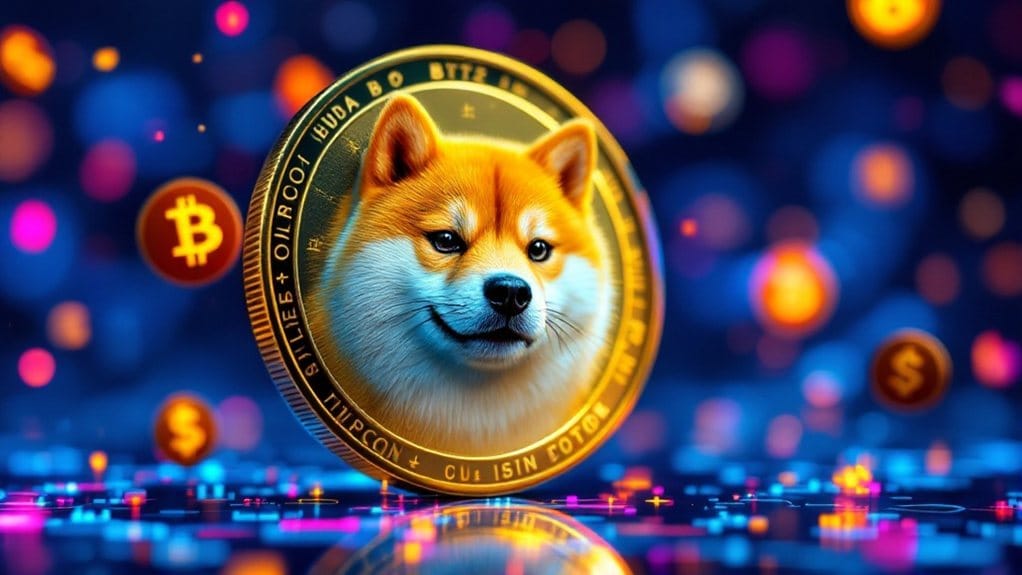NFT investing offers significant opportunities through unique digital asset ownership and portfolio diversification, with market growth projected at 9.10% by 2028. However, investors face substantial risks including market volatility, evidenced by a 70% decline from 2021 to 2022, alongside technical vulnerabilities and regulatory uncertainties. Smart contract exploits, environmental concerns, and intellectual property challenges present additional complications. Understanding these elements thoroughly can help determine whether NFTs align with individual investment strategies.

As the digital asset landscape continues to evolve, Non-Fungible Tokens (NFTs) have emerged as a controversial yet potentially lucrative investment vehicle, capturing the attention of both traditional investors and cryptocurrency enthusiasts alike. These unique digital assets provide verifiable ownership through blockchain technology, offering investors the opportunity to acquire everything from digital art to virtual real estate, while simultaneously supporting creators and expanding market accessibility. The ownership verification provided by blockchain infrastructure ensures transparent and immutable proof of authenticity.
NFTs represent a groundbreaking fusion of digital ownership and creative expression, revolutionizing how we invest in and value digital assets.
The potential for substantial returns has been demonstrated by numerous high-profile sales, with some NFTs selling for millions of dollars, while fractional ownership options have democratized access to previously exclusive markets. The technology enables global participation in digital asset markets, providing emerging artists and creators with new platforms to monetize their work and reach international audiences directly, circumventing traditional gatekeepers in the art and collectibles space. Artists can now maintain direct sales control by bypassing traditional intermediaries like galleries and auction houses. The market is projected to maintain steady growth, with experts forecasting a 9.10% increase by 2028.
However, significant risks accompany these opportunities, particularly regarding market volatility and regulatory uncertainty. The NFT market has experienced dramatic fluctuations, including a notable 70% decline from 2021 to late 2022, highlighting the speculative nature of these investments. The lack of clear regulatory frameworks presents additional challenges, particularly regarding intellectual property rights, securities classification, and tax implications.
Technical vulnerabilities pose another layer of risk, as smart contract exploits and security breaches can result in permanent asset loss. The management of digital wallets requires considerable technical expertise, while the environmental impact of blockchain operations raises ethical concerns about energy consumption. These technological challenges underscore the importance of thorough due diligence before entering the NFT market.
Despite these risks, NFTs continue to represent a unique intersection of technology, art, and investment potential. The market’s ability to provide global access to unique digital assets, coupled with opportunities for portfolio diversification and fractional ownership, suggests a lasting impact on the investment landscape.
As the market matures and regulatory frameworks evolve, investors must carefully weigh these benefits against the substantial risks inherent in this emerging asset class.
FAQs
How Do I Create My Own NFT Collection for Investment Purposes?
Creating an NFT collection requires strategic planning across multiple phases: initial conceptualization of unique digital assets, technical setup including wallet configuration and blockchain selection (Ethereum/Solana), and marketplace integration.
Creators must develop distinctive artwork, establish rarity traits, and determine collection size before minting through platforms like OpenSea or Magic Eden, while considering gas fees and market timing for ideal investment returns.
What Cryptocurrencies Are Typically Used to Purchase NFTS?
Ethereum (ETH) remains the dominant cryptocurrency for NFT transactions, particularly on platforms like OpenSea and LooksRare.
Solana (SOL) has emerged as a popular alternative, offering faster processing times and lower fees through marketplaces like Magic Eden.
Other blockchain networks supporting NFT purchases include Polygon, Binance Smart Chain (BSC), and Tezos, though their adoption rates are relatively lower than the primary ETH and SOL options.
Which NFT Marketplaces Are Considered the Most Reliable for Trading?
OpenSea stands as the most reliable NFT marketplace, boasting over $20 billion in sales and thorough security measures.
Rarible follows with its open-source platform and cross-blockchain functionality, while Crypto.com and Binance NFT offer established reputations in digital asset trading.
These platforms implement robust security protocols, including smart contract audits and encrypted transactions, with OpenSea and Rarible particularly noted for their extensive NFT collections and user-friendly interfaces.
How Can I Spot Potential NFT Scams Before Investing?
Investors can identify potential NFT scams by monitoring several key indicators: unusually high transaction volumes between the same wallets suggesting wash trading, dramatic price spikes that may precede rug pulls, and unverified creator accounts.
Additional red flags include requests for private wallet keys, considerably overpriced assets compared to market standards, and suspicious smart contract code.
Using blockchain analytics tools and conducting thorough creator background checks greatly reduces fraud risks.
What Tax Implications Should I Consider When Investing in NFTS?
NFT investors must consider several key tax implications: disposing of cryptocurrency to purchase NFTs triggers capital gains, while selling NFTs can result in either short-term or long-term capital gains taxes.
The IRS may classify certain NFTs as collectibles, subjecting them to higher tax rates of up to 28%.
Trading NFTs for other NFTs constitutes a taxable event, and creators face ordinary income taxation on initial sales.









